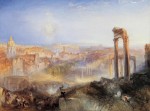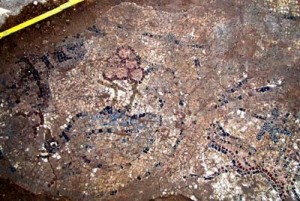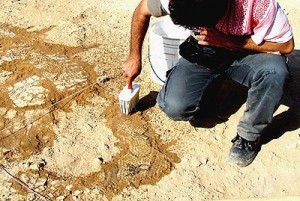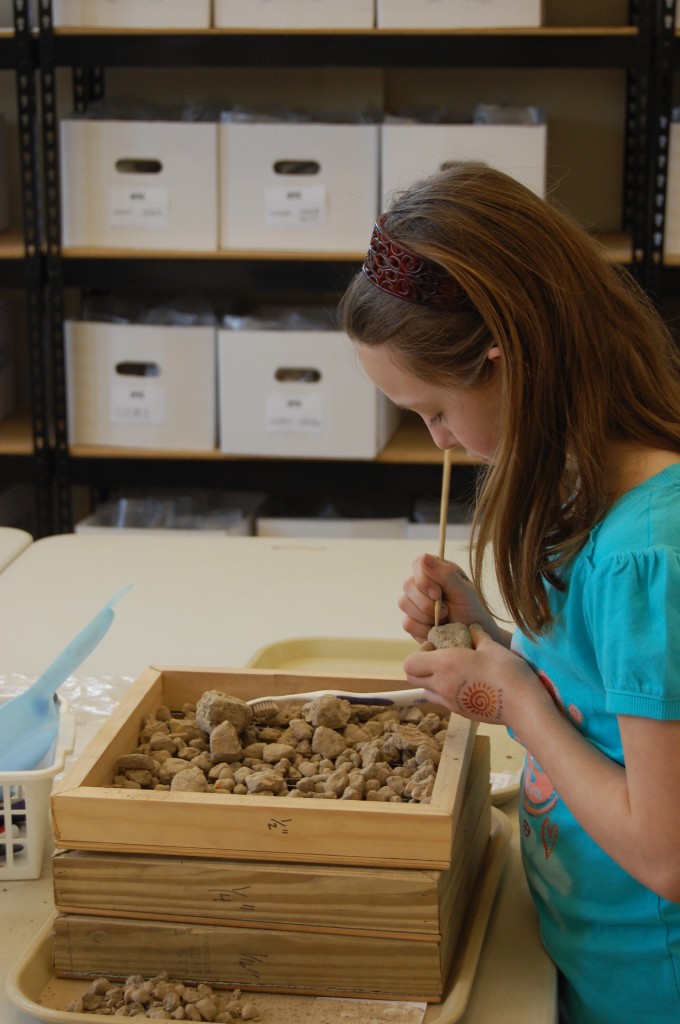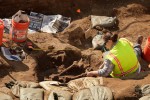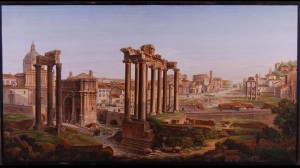 Still wounded that nobody bought me that $45 million Turner painting, I could learn to love again if you get me this amazing micromosaic from ca. 1879 of almost the exact same scene: a panoramic view of the Roman Forum with the Colosseum in the distance. It will go under the hammer on January 30th at Myers Auction Gallery in St. Petersburg, Florida.
Still wounded that nobody bought me that $45 million Turner painting, I could learn to love again if you get me this amazing micromosaic from ca. 1879 of almost the exact same scene: a panoramic view of the Roman Forum with the Colosseum in the distance. It will go under the hammer on January 30th at Myers Auction Gallery in St. Petersburg, Florida.
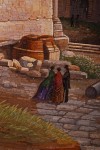 What makes this piece so astonishing is that it’s made entirely of hundreds of thousands of itsy bitsy teeny weeny pieces of opaque colored glass. The mosaic is 59 inches wide, 32 inches long and weighs over 100 pounds. It’s so huge and heavy the frame had to be supported with iron straps.
What makes this piece so astonishing is that it’s made entirely of hundreds of thousands of itsy bitsy teeny weeny pieces of opaque colored glass. The mosaic is 59 inches wide, 32 inches long and weighs over 100 pounds. It’s so huge and heavy the frame had to be supported with iron straps.
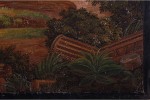 Although there is no artist’s signature, the piece is attributed with surety to Cesare Roccheggiani, a master mosaicist who worked at the Vatican workshops from 1856 to 1864 and moonlighted making popular micromosaics for the Grand Tour crowd and for art dealers at his private atelier. There were as many as 96 mosaicists working in Rome by 1874, but most of them produced smaller items like cameos and jewelry and small plaques for the tourist trade. A piece of this size would not have been the usual tourist purchase. This kind of magnificence was reserved for aristocrats and the very wealthy, and was probably commissioned rather than purchased off the rack.
Although there is no artist’s signature, the piece is attributed with surety to Cesare Roccheggiani, a master mosaicist who worked at the Vatican workshops from 1856 to 1864 and moonlighted making popular micromosaics for the Grand Tour crowd and for art dealers at his private atelier. There were as many as 96 mosaicists working in Rome by 1874, but most of them produced smaller items like cameos and jewelry and small plaques for the tourist trade. A piece of this size would not have been the usual tourist purchase. This kind of magnificence was reserved for aristocrats and the very wealthy, and was probably commissioned rather than purchased off the rack.
Since the 1920s, the artwork had rested above a mantel in the residence of a prominent Tampa businessman. When the home was sold in the 1980s, the buyer was given the option of purchasing some of the existing furnishings. The micromosaic was among the pieces selected. Now, through descent, the estate artwork is headed to auction.
“While unsigned, we believe it is almost certainly the work of Roccheggiani,” said Michael Myers, founder and co-owner of Myers Auction Gallery. “A micromosaic nearly identical in size and subject matter, and artist-signed by Rocchegiani, was auctioned last month at Christie’s London gallery for more than half a million dollars.”
The exquisite artistry in the circa-1879 work to be auctioned by Myers renders a photorealistic quality. “It’s so luminous, it even fooled a visitor who walked into our gallery and thought they were looking at a picture on a flat-screen TV,” said Mary Dowd, Michael’s wife and business partner. “An artwork as stunning as this one would have been very expensive in its day and available only to a very wealthy buyer.”
Some things never change. The estimate is a conservative $100,000-$200,000, but given the Christie’s result from December, I think we can safely say that figure will be eclipsed.
NB: if you compare the Turner painting to this mosaic, you can see how much more excavation was done in the area between 1839 and 1879. Granted, Turner’s beautiful glowing mist isn’t exactly photorealistic, but look particularly at the Arch of Septimus Severus in the lower left. In Turner’s time it looks almost sunken at the base of a hill. By the time Roccheggiani made his mosaic, that area is cleared, paved and staired.
Those are the results of the final defeat of the Pope, inclusion of Rome into a unified Italy in 1870 and the subsequent push to revive the city’s ancient past.
